-
Posts
632 -
Joined
-
Last visited
-
Days Won
43
Tónskáld last won the day on April 16 2023
Tónskáld had the most liked content!
About Tónskáld

- Birthday July 31
Profile Information
-
Biography
I'm an American composer of instrumental and vocal music. I dabble in music derived from non-heptatonic scales, and the resultant works may sound a bit weird, harsh or exotic at first listen.
-
Gender
Male
-
Location
United States
-
Occupation
Something non-musical
-
Interests
Writing music, playing piano, being outdoors, traveling
-
Favorite Composers
Debussy, Messiaen, Sibelius, Szymanowski
-
My Compositional Styles
Modern/Modal
-
Notation Software/Sequencers
Sibelius, Spitfire Labs (VSL)
-
Instruments Played
Piano, viola, clarinet, flute, French horn
Recent Profile Visitors
3,051 profile views
Tónskáld's Achievements
-
This patron has been rather disappointed in the community response to this particular competition. Young Composers Forum (YCF) is intended to be a place where budding composers from all walks of life can grow in their craft alongside their peers. We have always welcomed those who are willing to listen to the feedback of their peers, and we have always encouraged those who post for the sake of adulation and admiration to find other outlets for their arrogance. The competitions we host are no exception to the vision of YCF. They are not intended to be "professional grade" competitions, although we do strive to make them as robust as possible. No, their primary goal is to provide a space for the YCF community to be able to grow, exercise what they've learned, and have the pleasure of sharing their music with others. We, the staff, decided to offer prize money as a way to give back to the YCF community, to thank them for their contributions and hopefully to draw in more and likeminded composers. We unequivocally welcome such people into the YCF family. This competition, unfortunately, has not produced that effect. There has been a pervasive sense of entitlement that is, quite frankly, not very becoming of our community. We, the judges and staff of YCF, are not getting a single cent of compensation for our time in judging this competition, nor for any of the other services provided for this community. I have been extremely discouraged by the behaviors and comments of some of the entrants, who have challenged the culture here at YCF and threatened it with elitist, materialistic ideals. I do not wish to see the beautiful thing we have fostered together here wither away under such ideals. (That said, we welcome feedback on how to improve these things, but please bear in mind that such feedback is better received if it comes from someone who has also invested in the YCF community, such as an active YCF member.) In closing, I would like to remind you that a competition is to be enjoyed by both judge and entrant. I have not enjoyed the competition this time around, and earnestly hope that future competitions will once again reflect the culture at YCF. Respectfully, Jörfi
-
I listened to the whole thing and followed along in the score. The chord progressions did remind me of "Elvish" music by Howard Shore (and from what I can recall of the Rings of Power... I didn't watch much of that show). You can find complement chord progressions (G vs. Db, C vs. F#, etc.) in a lot of modern music, filmscore or otherwise. John Williams famously includes them in the opening Star Wars fanfare, and Holst puts them everywhere in Mars, for example; I wouldn't necessarily say that Bear McCreary has cornered the market on Elvish chord progressions, nor are you beholden to follow his lead. For the first couple of minutes, the piece certainly evokes a sense of wonder and etherealness. After that, however, I have to agree with Mark that it becomes a continuous mood for 7 minutes that changes pace and feeling only a little throughout the piece's duration. Its development is a little disjoined, in my opinion. Themes and variations are introduced over the chord textures that don't seem to have any relation to each other, and appear to serve merely as a way to make the piece longer for the sake of making it longer. I didn't notice any bad part-writing. The vocal parts seem singable, though there should be some indication as to what sound they're singing. It's a great piece overall! My suggestion is to develop your thematic material ahead of time and work it in to the piece as organically as possible. This should be significantly easier now that your mind has conceptualized the piece. Keep up the good work! Jörfi
-
Well, now this song is stuck in my head. Another successful work, @panta rei! You are so gifted at writing tight harmonies and charming melodies. This tarantella of yours is simply amazing! I love the lightness of it, and it is such fun to play. Keep it up! Jörfi
-
Tónskáld started following Kyrie eleison setting
-
You handle vocal writing very well; each part stays comfortably within a singable range. I am concerned, however, about the harmonies you've used here. For the most part, the harmonies remain contracted, separated by 2nds alone. This is certainly allowable and, at times, effective, but I wonder if using them here muddies up the sound too much... Your harmonic language, too, is a bit confusing. Is there method you use to choose chords? The rhythms are also problematic, I think. The alternating 5/8 and 6/8 time signatures don't really lend themselves well to the natural cadence of the text, and the truncation of words mid-syllable (eleison --> ...ison, etc.) only adds to the difficulty. What effect are you trying to achieve with this work? Is it intended to be worshipful and reverent (like the text)? Or is it being written for a professional choir to showcase their abilities to perform music of a more eclectic taste?
-
I think this sounds like ambience music for a discovery or exploration sequence from any movie. It has a slightly exotic sound owing to the "ethnic" instruments you use, but nothing else really stands out to me. It's not bad at all. In fact, I think you have an excellent grasp of how to fit sounds together for ambience like this. Musically, though, it's a bit wooden. You use block chords beneath an extended melody and that's about it. It's a nice melody, don't get me wrong, but I don't think this piece is very memorable. It would play in the background of some film, the clip would be over, and I'd forget about the soundtrack accompanying it. Clearly, I can't speak for the judges in your competition, so you can take what you want from my comments here. Generally, though, I recommend studying counterpoint and exploring ways to change up the harmonic motion of your music. Thanks for sharing! Jörfi
-
This is, in a word, fantastic! I love the impressionist language you employ here: the chromaticism and the "flowing" of harmonies. The crunch of the melody in tritones, flavored with growling bass arpeggios, only to be released at the end in a glorious restatement in major triads. This really is good stuff, in my opinion. It seems you have a gift for melodic phrasing. The melody isn't stark and singable; it sort of sinks into you such that you don't realize the entire piece is really just the same musical phrase framed in different rhythms and harmonies. That requires depth and maturity I typically only find in much older composers. I am very impressed. That said, I do think your scoring could handle a little more decoration. With such impressionistic musical language, you should include a bit of written language to reflect what's going on. This isn't just 'Largo.' This is more like 'Largo con moto' or 'Upon hearing the dolorous sound of winter rain' or something equally expressive. You could also add more technique or expression text to the music, and perhaps clean it up somewhat. For example, the empty bar at M7 isn't necessary; you could put a fermata atop the end of M6 to indicate a long pause and get rid of the empty bar altogether (the same could be done for M13). I'd like to see more hairpins or cresc./decresc. markings in here, too, since that's the way I heard it played. (Good job on that, too, btw!) I think you show lots of promise as a composer and I hope you keep it up! Best, Jörfi
-
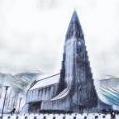
Out of Time
Tónskáld replied to Zimr Music's topic in Incomplete Works; Writer's Block and Suggestions
I agree with @Henry Ng Tsz Kiu; this sounded more Gothic and scary-castle-ish to me. With soundtrack or ambience music, we have to be very careful when we write imitatively, as you've done here with the spinning clock and sounding alarm. There is a real chance that your imitations will fall flat with your listeners, that they won't sound at all like the things you're trying to imitate. It's usually better to go with representations of the sounds rather than straight mimicry. So, for example, rather than have the organ imitate "ticking clock" sounds, you might instead focus on creating a feeling of anxiety. It's not bad music what you've written, just might use a little bit of improvement. Thanks for sharing! Jörfi -
Henry Ng Tsz Kiu started following Tónskáld
-
Welcome to the forum, @veps! This is quite a piece you've submitted for your foray into YC. You must be something of an accomplished pianist to have been able to play that! The music, too, is phenomenal. Because of your use of whole tone scales, it had strong Debussy overtones (particularly the opening to his Pour le piano), although I sensed something of the Russian Romantics in there, too—Rachmaninov, Medtner, etc. But it was definitely your voice, not theirs, contained in all those notes. You are right; it is dense, but it's more than just a bunch of arpeggiated chords mixed in between bombastic martellato passages. It is evident you put some thought into this regarding its development. The theme, no matter how simple it might have been, was teased out beautifully over the life of the piece, and there was enough variation in the style of play that it never seemed to get boring. I have other comments, too, but it would be helpful to see more of your work. Please, submit the other preludes so I can hear those, too!!! Best, Jörfi
-

Prelude No.7 - Live Performance by Henry Ng
Tónskáld replied to Thatguy v2.0's topic in Piano Music, Solo Keyboard
Having watched almost nothing of South Park, I don't feel I'm qualified to say anything here. But I know good music when I hear it (or so I tell myself), and this is good music. Fun and soulful... real bluesy feel. I give it two thumbs way, way up! -
You establish some promising themes in the opening measures, but these are unfortunately abandoned and never developed. As early as the 3rd measure, you begin to introduce new material that simply takes away from the rhythm and motion you're trying to establish. In measure 9, the tenors burst forth with an explosion of 16th notes seemingly out of nowhere, while the rest of the voices join in with unrelated rhythmic patterns. And then things just unravel from there. Perhaps you're just jotting down some musical ideas, but you need to refine things a little before posting them to the forum for feedback. The part-writing needs significant adjustment. Both S and T are scraping the top of their ranges (A) frequently. If this is intended for human voices—and I have to assume it is since you've titled it SATB—this is simply unsingable. There are multiple issues with voice leading and crossing of voices. And the alto's part at M31... no way that's ever going to happen. Writing for human voices is a very different exercise than writing for instruments. To improve, I recommend studying the works of good choral writers, such as JS Bach, Beethoven, Mozart, and even modern composers like Eric Whitacre, Ola Gjeilo, or Morten Lauridsen. Happy composing! Best, Jörfi
-

Twelve Ways of Thinking for 12 instruments
Tónskáld replied to Uhor's topic in Orchestral and Large Ensemble
Music must serve a purpose. In this case, it is the output of a function. You have serialized some aspects of it (meter, tempo, pitch) and organized them by groups of 12, which is quite innovative. The result is 11 minutes of soundscape that is not altogether unpleasant, although it is not without its issues. The chords are nondiatonic: dissonant and exotic but, as is the case with strictly nondiatonic harmonies, the ear longs for cadential moments. A pause, a turn—anything to suggest we have a bit of resolution. This piece, while meditative and brooding, does little to provide us that. For 11 long minutes the harmonies drone on and on, rarely straying from the same oblique motion. That is one of my greatest critques of this work: please try to alter the harmonic motion from time to time or your music will sound stagnant and somewhat boring. A closely related issue is the lack of counterpoint. As I just mentioned, most of the harmonic motion is oblique, meaning that opportunities for counterpoint are diminished. There are some instances of counterpoint here, but not nearly enough to maintain interest, in my opinion. Finally, although it is not within my power to declare that "serialism is dead," I do think serialism should be approached carefully in our modern times. I believe that what you have done here is a good example of how serialism can be applied to contemporary compositions. For serialist music, this is actually rather enjoyable! Thank you for sharing, and I look forward to more of your works! Best, Jörfi -
For ease of reference, I thought I would paste what Wikipedia says about musical eclecticism here: In music theory and music criticism, eclecticism refers to the use of diverse styles, either distinct from the background of an artist using them, or from culturally bygone eras and movements. The term can be used to describe the music of composers who combine multiple styles of composition; an example would be a composer using a whole tone scale variant of a folk song in a pentatonic scale over a chromatic counterpoint, or a tertian arpeggiating melody over quartal or secundal harmonies. Eclecticism can also occur through quotations, whether of a style, direct quotations of folk songs/variations of them—for example, in Mahler's Symphony No. 1—or direct quotations of other composers, for example in Berio's Sinfonia. Unfortunately, I can't speak much to the issue personally, as my involvement in the academic music setting is auxiliary at best. From my limited experience, it does seem that care is taken to expose students to various schools of musical thought. I've been to several local concerts featuring the music of university students... some of them are heavily influenced by popular music, some are largely experimental (all that extended technique stuff), none of them are serialist, and very few of them are good. But this is a public university, not a conservatory, and I'm sure its mindset of "anyone can make music" waters down the end product. I don't think it's worthwhile to describe modern "classical" music as inherently good or bad... it simply is. And what it has become is staggeringly complex; this eclecticism has produced a vast array of styles and expression, and there is surely something for everyone out there. For example, I love the sound of quartal harmonies. I'm quite hard-pressed to find any such music before the early 20th century. On the contrary, admirers of tertian harmony might find the music of the 20th century much to their disliking. However, nowadays classical music has become a glove that fits most. I can find modern composers who use exclusively quartal harmonies, as well as those who use tertian harmonies (perhaps even in a Neoclassical or Neobaroque style). Time will tell whether this eclecticism is to our craft's benefit or detriment.
- 32 replies
-
- 1
-

-
Not sure what to make of the score. It clearly shows two staves for piano and one for "Klassinen kitara," which Google Translate tells me is Finnish for "classical guitar." However, the sounds I'm hearing are that of a flute, piano, and [barely audible] guitar. You might want to make your score clearer about what instruments it's actually intended for. Your chord notations indicate a G chord to start off with, but it's clearly an E5 chord (or a G6 chord if we're being nice). The rest of the work takes off into a confusing array of 8th note runs which are repeated in all 3 voices. There's nothing wrong with that except for the fact that you don't establish any harmonic patterns. It seems random. Even the rhythms don't fall into any sort of pattern, calling into question whether this is really in 3/4 time or if no time signature would be more appropriate. In my opinion, this work would be greatly strengthened by use of cadences and phrasing, and especially if some sort of structure could be provided, both harmonically and rhythmically. It's not a bad piece, not even close. I just think you could perhaps spend a bit more time considering how to better structure this work. Give it good rhythmic motion and establish some harmonic patterns. That would really help out, I think. Best, Jörfi
-
Piano 228: Nice start, even included some borrowed notes (F#) that set us up nicely to transition to a new tonal center... but it never happened. The way you handled the harmonizing of "Ode to Joy" was inconsistent with the rest of the piece, which employed harmonic transitions after 2 beats. In the Ode to Joy section, your harmonies are allowed to change every beat. Then it moves on to seemingly unrelated material with harmonies rooted in the vii position (weak and transitional). This needs to be addressed. Piano 233: Here at least we modulate to E minor, although the transition isn't very well done. The melodies are nice; it's a shame you don't do much with them. And the rhythmic patterns are quite inconsistent. You might have had the left hand continue the opening rhythm (quarter note followed by 16th notes) after the transition to E minor, but instead we are introduced to a brand new rhythm with dotted 8th + 16th notes. You probably also should have begun the minor section at the start of a measure rather than halfway through one, since your melodic material began on the first beat of a measure. Piano 230: This opens with confusing harmony... are we in F# minor or D major (with a III root)? But at least here your rhythmic patterns are more consistent and recognizable. The section beginning at M13 is nice, an effective use of cadences/modulation. However, the harmonic progressions afterward lose their potency, mainly because you fail to establish convincing root chords. For example, in M19 you have what appears to be a B minor chord in beats 3 and 4, but both voices begin this chord on F#, which isn't very convincing. The bass (root) should have been a B note moving to an F#, instead of how you currently have it. That's all I have for now. Keep it up! Best, Jörfi

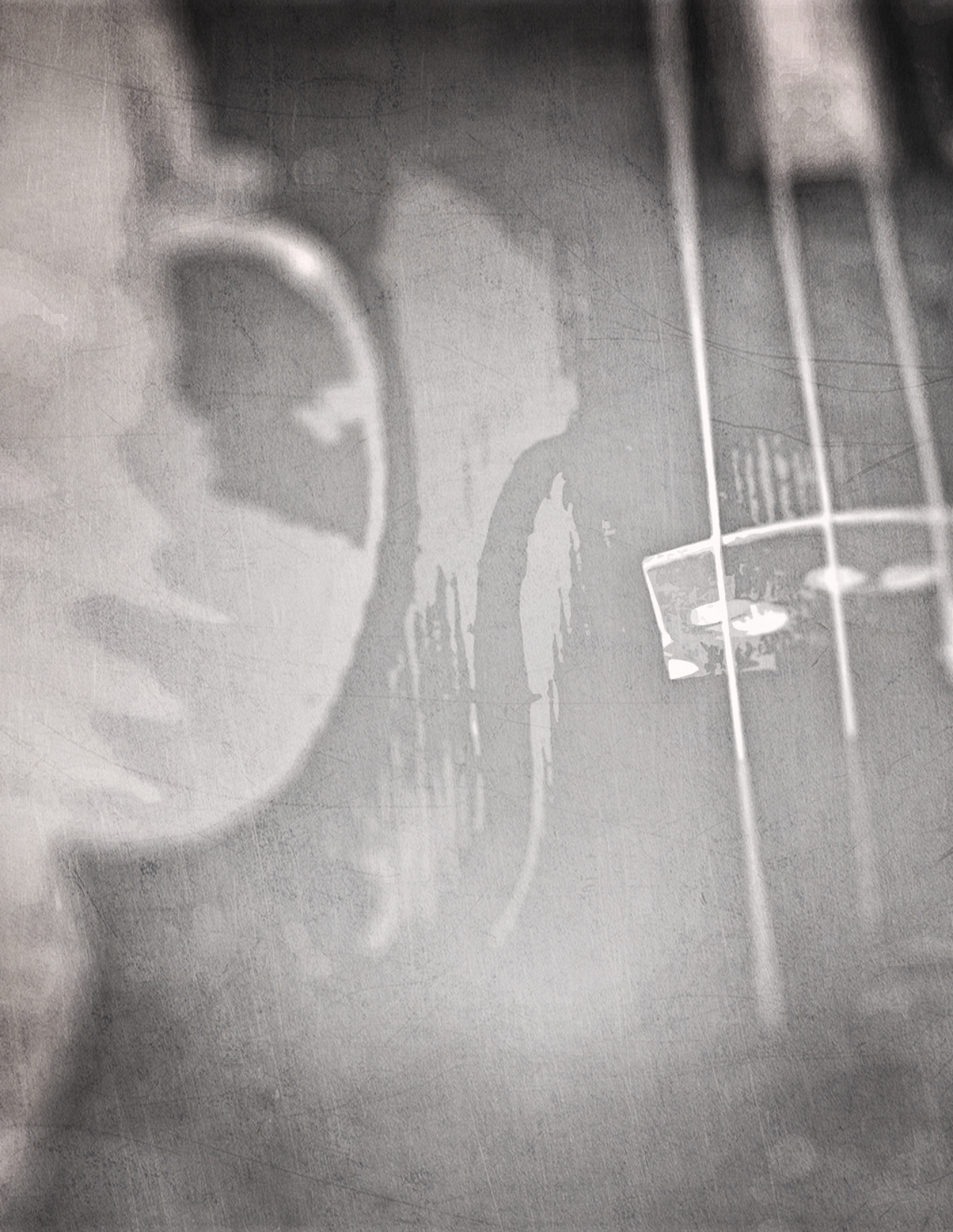
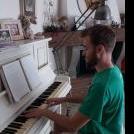




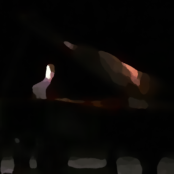

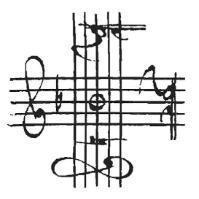
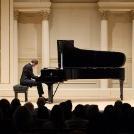


.thumb.png.8b5b433a341551e913a34392660bc95b.png)




